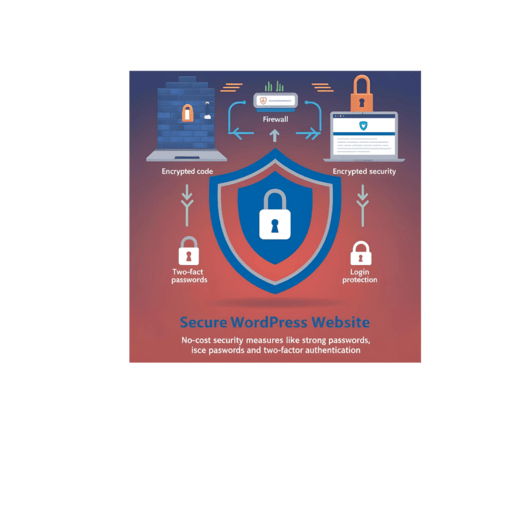
How to Enhance the Security of Your WordPress Site Without Any Additional Cost
WordPress powers over 43% of all websites, making it a prime target for hackers. Fortunately, you don’t need expensive plugins or services to secure your site. With some strategic adjustments and best practices, you can significantly enhance your site’s security at no additional cost. In this guide, we’ll walk you through actionable steps to fortify your WordPress site.
1. Keep WordPress Core, Themes, and Plugins Updated
Updates often include patches for known vulnerabilities, making them critical for maintaining security.
- Check for updates under Dashboard > Updates.
- Enable automatic updates by adding this line to your
wp-config.phpfile:
define('WP_AUTO_UPDATE_CORE', true);Remove unused themes and plugins to reduce potential entry points for attackers.
2. Use Strong Passwords and Two-Factor Authentication (2FA)
Weak passwords are one of the leading causes of compromised WordPress sites.
- Create strong passwords with uppercase, lowercase, numbers, and special characters.
- Enable 2FA using free plugins like Wordfence or Google Authenticator.
3. Limit Login Attempts
Brute force attacks involve hackers trying multiple username and password combinations until they gain access.
- Use free plugins like Limit Login Attempts Reloaded.
- Alternatively, modify your
.htaccessfile:
Order Deny,Allow
Deny from all
Allow from YOUR_IP_ADDRESS
4. Change the Default Admin Username
The default "admin" username is a well-known vulnerability that hackers exploit. Changing it to something unique adds another layer of protection.
- Create a new user with administrator privileges and delete the default "admin" account.
- Alternatively, use the following SQL query if you have database access:
UPDATE wp_users SET user_login = 'new_username' WHERE ID = 1;5. Disable File Editing in the Dashboard
By default, WordPress allows administrators to edit theme and plugin files directly from the dashboard. Disabling this feature prevents attackers from modifying your site’s code if they gain access.
- Add the following line to your
wp-config.phpfile:
define('DISALLOW_FILE_EDIT', true);6. Secure Your wp-config.php File
The wp-config.php file contains sensitive information about your WordPress installation. Protecting it ensures that attackers cannot tamper with your site’s configuration.
- Move the
wp-config.phpfile to a higher directory outside the web root if possible. - Restrict access to the file by adding the following rules to your
.htaccessfile:
Order Allow,Deny
Deny from all
7. Implement HTTPS Encryption
Using HTTPS encrypts data between your website and its visitors, protecting sensitive information like login credentials and personal details.
- Obtain a free SSL certificate from services like Let’s Encrypt through your hosting provider.
- Force HTTPS by adding the following lines to your
.htaccessfile:
RewriteEngine On
RewriteCond %{HTTPS} off
RewriteRule ^(.*)$ https://%{HTTP_HOST}%{REQUEST_URI} [L,R=301]8. Regularly Back Up Your Website
While backups aren’t strictly a security measure, they are essential for recovering your site quickly in case of an attack.
- Use free backup plugins like UpdraftPlus or BackWPup to schedule regular backups.
- Store backups in a secure, offsite location such as Google Drive or Dropbox.
9. Harden Your .htaccess File
The .htaccess file controls how your server handles requests. By tweaking it, you can block suspicious activity and improve security.
- Prevent directory browsing by adding this rule:
Options -Indexes- Block XML-RPC attacks (a common vector for brute force attacks):
Order Allow,Deny
Deny from all
10. Monitor Your Site for Suspicious Activity
Keeping an eye on your site’s performance and logs can help you detect and respond to threats early.
- Check your site’s error logs regularly via your hosting control panel.
- Use free tools like Query Monitor to analyze queries and identify potential issues.
- Set up email notifications for login attempts or changes to core files using plugins like Activity Log.
Pro Tip: Always back up your site before making significant changes like changing usernames or editing configuration files.
Conclusion
Securing your WordPress site doesn’t have to come with a hefty price tag. By implementing the strategies outlined above, you can significantly reduce the risk of cyberattacks while keeping costs low. Remember, security is an ongoing process—regular maintenance and vigilance are key to safeguarding your site.
